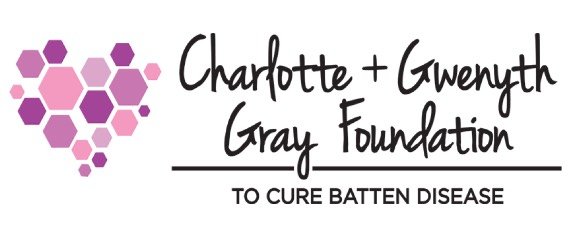Charlotte and Gwenyth Gray Foundation Funds Clinical Trial for Rare Batten Disease Variant

The Charlotte and Gwenyth Gray Foundation to Cure Batten Disease was launched in 2015 by Hollywood producer Gordon Gray and his wife Kristen to advocate and raise funds for research to find a cure for Batten disease.
The foundation also supports patient therapies and the purchase of equipment crucial to Batten patients’ well-being and rehabilitation. Both of the Gray’s daughters — Charlotte, age 6 1/2, and Gwenyth, age 4 — have been diagnosed with Batten.
The disease process results in progressive neurological impairment characterized by symptoms that can include developmental regression, seizures, blindness, behavior changes — and eventually death, usually by the age of 12.
“You’re looking at your very healthy, vibrant children who are loving life right now who could potentially lose all of that joy in a very short time,” said Kristen Gray in a video on the Charlotte and Gwenyth Gray Foundation website. “So we have a very short window to try and save them.”
At least eight different genes are known to cause Batten disease. The extremely rare Batten variant the Gray girls have is called late infantile Batten disease and was caused by mutations in the CLN6 gene. Its symptomatic development can differ significantly among patients, making its progression difficult to predict.
In part due to its extreme rarity, late infantile NCL Batten disease caused by CLN6 mutations hasn’t historically attracted much funding for research of potential treatments and eventually a cure. Currently there are no treatment options for Batten disease CLN6.
The Grays admit they are looking for a miracle for their children and others like them. The Charlotte and Gwenyth Gray Foundation established a fund for accelerating research for a cure to save the lives of all children impacted by Batten disease.
A program initiated, coordinated, and funded by the Gray Foundation has resulted in a first-of-its-kind, FDA-approved investigational clinical trial (NCT02725580) for children with a confirmed diagnosis of Batten disease CLN6 now underway at Nationwide Children’s Hospital Center for Gene Therapy in Columbus, Ohio.
This clinical trial is the first human, open-label, single-dose study of self-complementary AAV9 carrying the CLN6 gene. The AAV9 virus, which does not cause adverse effects in humans, delivers a replacement CLN6 gene to the brain where it will hopefully help restore functionality lost by the mutated gene that causes late infantile Batten disease, allowing cells to purge built-up waste and restore balance in the brain.
At least six patients with confirmed Batten CLN6 diagnoses will undergo the gene transfer administered via one-time delivery through an intrathecal catheter inserted by a lumbar puncture. Three patients have already been enrolled — including Charlotte and Gwenyth Gray — and recruitment for additional participants is ongoing. The trial’s projected completion date is March 2019.
The Gray Foundation reports that it has committed more than $3.2 million directly to Batten disease research in less than a year, and that while its initial primary focus is on Batten CLN6, the goal is to expand research support to other Batten disease variants. The foundation expects that any advances achieved related to the treatment of Batten CLN6 will also be applicable to combating other rare diseases that impact millions of people.
In addition to working with leading researchers studying gene transfer approaches to pediatric orphan diseases, the Gray Foundation will continue actively funding research of promising innovations in small molecule therapies, stem cell therapy, RNA modulating compounds, pharmaceuticals, and natural compounds.
The Grays and foundation members are particularly optimistic about the research potential into restorative therapies involving stem cell transplants, in which customized cells are applied to damaged areas of the brain. They notes that while it is still at an early stage of development, the potential for brain regeneration is no longer in the realm of fiction.
The Gray Foundation’s research team has also identified a targeted approach to validating novel Batten disease therapies using FDA-approved drugs, generally regarded as safe nutraceuticals, and designer molecules that can potentially correct gene mutations — a validation method that involves a patient’s own cells in culture to assess the effect of these compounds on restoring normal function of the mutated protein.
Because these agents are mostly classified as being safe for human use, there’s a high potential for compounds to transition quickly to the clinical trial stage.
For more information about the Charlotte and Gwenyth Gray Foundation to Cure Batten Disease, and to donate to help support its work, visit http://www.curebatten.org/#top-section.
The foundation also has a Facebook page: https://www.facebook.com/curebatten/







